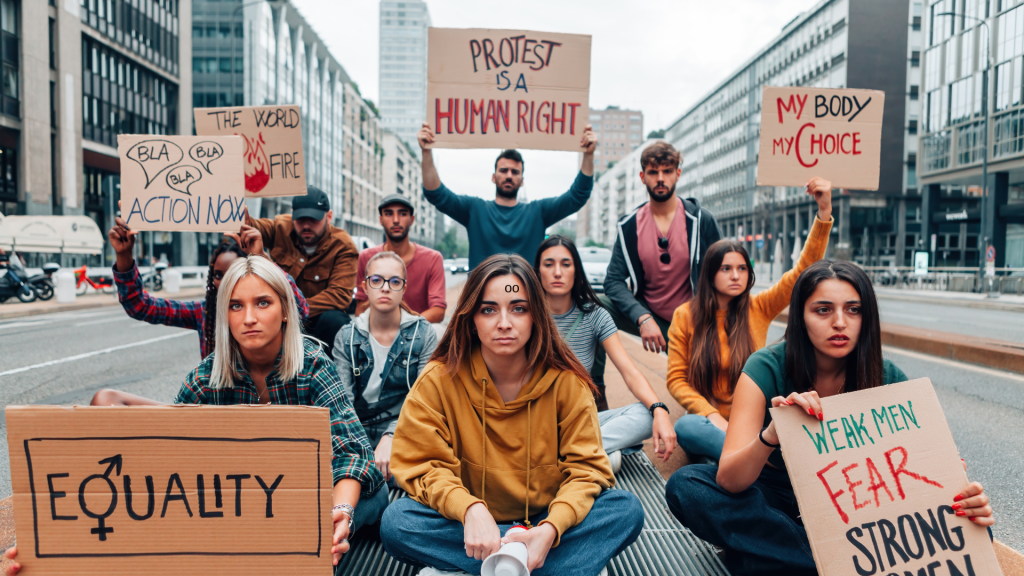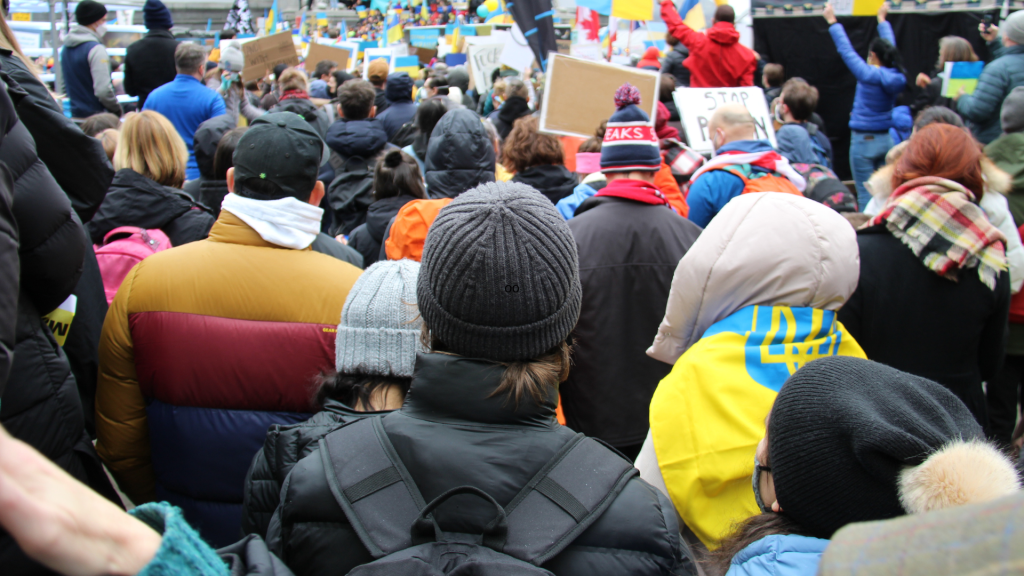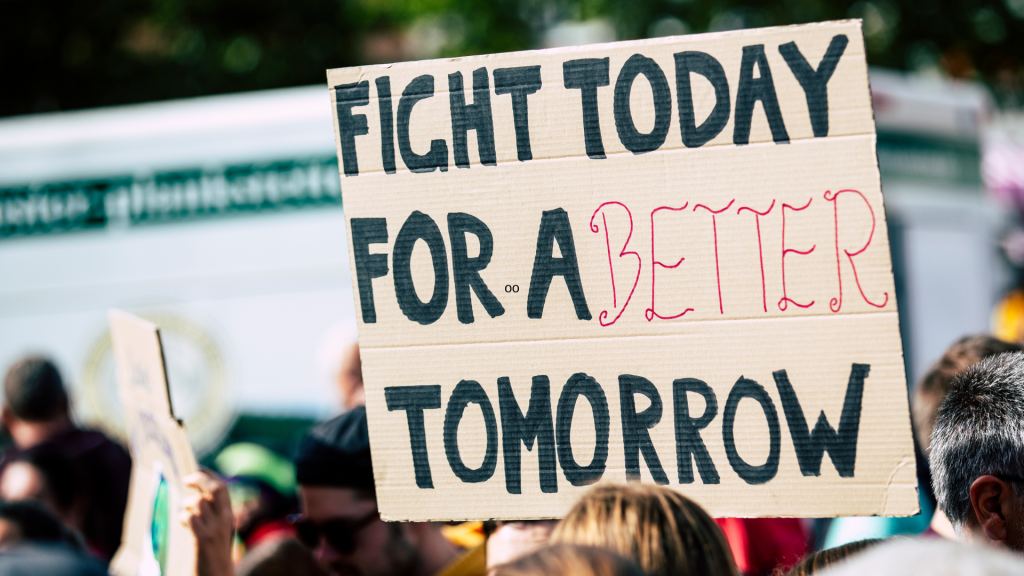From the Civil Rights Movement to climate action initiatives, grassroots movements have continually shaped our societies. Thanks to those moments, we see that power resides not just in boardrooms and political offices but also in the hands of the people.
In this concise guide, we will introduce you to the concept of grassroots movements and how it can be a powerful tool everyone can use.
What are grassroots movements?
Grassroots movements are bottom-up initiatives driven by the community’s energy, aiming to provoke local, national, or even global change. They spring from the ground up (hence the term ‘grassroots’), powered by individuals, small groups, or communities who feel strongly about a particular issue.

Grassroots movements are often associated with activism, community organizing, social justice, and political campaigns, and they can be effective in achieving social change and raising awareness on important issues.
What is grassroots organizing?
Grassroots organizing is the process through which grassroots movements gain momentum. It involves bringing together like-minded individuals, cultivating a shared vision, and organizing collective action.
The process can include:
- Holding community meetings.
- Educating the public about the issue.
- Conducting regular and grassroots fundraising events.
- Mobilizing volunteers to advocate for the cause.
Grassroots movements and organizing use a lot of powerful tactics, and the people involved need to be equipped with the right tools. For instance, HubDialer supports organizations and campaigns of all sizes with affordable, straightforward-to-reuse calling and soon-to-be-released SMS texting tools.
Grassroots movement vs grassroots mobilization
While the terms ‘grassroots movement’ and ‘grassroots mobilization’ are often used interchangeably, their meaning has a slight nuance. A grassroots movement refers to the overall initiative driven by community members to effect change.
Grassroots mobilization is a strategy within this movement. It involves activating a network of individuals to engage in specific actions, such as attending rallies, signing petitions, or contacting their representatives.
How does a grassroots movement work?
Grassroots movements work by harnessing the collective power of individuals united by a shared cause. They start small, usually at the local or community level. As their message resonates with a larger audience, they grow, reaching national or global stages.
The movements aim to build community support and public awareness and encourage individual participation. Grassroots action can disrupt established structures and initiate social, political, or environmental reform.

What are the goals of grassroots movements?
While the specific goals of grassroots movements vary depending on the cause, they all aim to effect change somehow. This could be influencing public policy, challenging social norms, advocating for legislation, or raising awareness about a particular issue.
Some common goals include:
- Raising awareness about an issue
- Building support for a particular policy or legislation
- Holding elected officials accountable
- Mobilizing people to take action
How do grassroots movements differ from traditional political movements?
Grassroots movements differ from traditional political movements in several ways.
Here are some key differences:
- Grassroots movements are driven by ordinary citizens, while traditional political activities are often led by politicians or other influential leaders.
- Grassroots movements are characterized by their bottom-up approach. In contrast, traditional political campaigns are often characterized by their top-down approach.
- Traditional political movements may have a broader agenda, but grassroots actions often focus on a specific cause or issue.
- Grassroots movements are often more democratic and inclusive than traditional political movements – they allow ordinary people to have a voice and make a difference.
- Grassroots movements often use narrow communications such as mail, e-mail, phone calls, or face-to-face visits rather than broadcast media such as television or radio. Traditional political activities, on the other hand, often rely heavily on broadcast media.

As you can see, grassroots movements offer a powerful way to affect change and bring about social and political transformation. But they can also achieve more than that.
What are some examples of grassroots movements in the US?
America has a rich history of grassroots movements that have shaped its social and political landscape. So here are some notable examples of it:
- Civil Rights Movement (1954-1968): This movement began with ordinary African Americans standing up against racial segregation and discrimination. Through boycotts, sit-ins, and marches, they pushed for legislation that ensured equal rights, including the Civil Rights Act of 1964 and the Voting Rights Act of 1965.
- Women’s Suffrage Movement (1848-1920): Women’s Suffrage was a decades-long fight to secure the right for women to vote in the United States. It started with grassroots efforts by women and some men who believed in equal voting rights, culminating in the 19th Amendment in 1920.
- The Environmental Movement (1962-Present) drew attention to environmental issues. It influenced the creation of the U.S. Environmental Protection Agency and vital environmental laws.
- Gay Rights Movement (1969-Present) fought for the civil rights of the LGBTQ+ community, leading to significant legal victories, including marriage equality.
- #BlackLivesMatter (2013-Present) started as a hashtag in response to Trayvon Martin’s death and subsequent acquittal of his killer. It has become a global initiative to end police brutality and systemic racism.
- Tea Party Movement (2009-2016) focused on lower taxes, less government intervention, and reduced national debt. It was crucial in the 2010 mid-term elections and influenced Republican Party politics.
- The Anti-War Movement (1960s) opposed U.S. involvement in the Vietnam War. It started on college campuses and led to one of American history’s most significant protest movements.
- #MeToo Movement (2006-Present) went viral in 2017 following allegations against Hollywood producer Harvey Weinstein. It has since spurred global conversations about sexual harassment and assault.
- March For Our Lives (2018-Present) rallied to advocate for gun control legislation. The march in Washington, D.C. became one of the largest protests in American history.
- The American Indian Movement (1968-Present) began to address issues related to sovereignty, leadership, and treaties between Native Americans and the United States government. It has been instrumental in changing federal Indian policy and restoring Indian pride and culture.
How to start your own grassroots action?
Starting your grassroots action begins with identifying an issue you’re passionate about. It can be a daunting task, but it is also enriching.
Here are some tips to get you started:
- Hold regular meetings to discuss strategies, actions, and progress. Harness the power of social media to amplify your voice. Engage your local community through events, rallies, or even door-to-door campaigns. Be patient and persistent – change doesn’t happen overnight.
- Identify an issue you’re passionate about and deeply invested in. It would help if you cared enough to dedicate time, effort, and resources.
- Once you have a cause, you should establish clear, attainable objectives. What do you hope to accomplish? What changes do you want to see? Clearly defined goals will guide your activities and help maintain your focus.
- Grassroots movements are community efforts. Gather a team of like-minded individuals who share your passion. This team will not only share the workload but also provide a broader range of ideas and skills.
- Plan your strategy and the methods you’ll use to achieve your objectives. This could include community meetings, public rallies, social media campaigns, or direct lobbying of public officials. Create a timeline and assign roles and responsibilities to your team members.
- Start implementing your plan. Remember, significant changes often start with small steps. It’s important to celebrate every victory, no matter how small, as this will keep the team motivated.
Grassroots actions require time and patience. Stay persistent, and don’t be discouraged if progress seems slow. Most importantly, keep your passion burning bright. Your enthusiasm will inspire others and attract more people to your cause.
How does grassroots lobbying influence grassroots movements?
Grassroots lobbying is a powerful tool for grassroots movements. It involves encouraging individuals to make their voices heard by those in power, directly or indirectly. This could be through writing letters, making phone calls, or meeting their representatives. By leveraging grassroots lobbying, movements can influence decision-makers, pushing them to act in favor of their cause.
The impact of grassroots lobbying extends beyond shaping policy. Lobbying encourages individuals to take an active role in the democratic process while creating more personal responsibility in participants and realizing that they, too, can make a difference.
What is the role of social media and technology in grassroots movements?
Social media and technology play a significant role in grassroots movements.
Here are some ways in which they can impact grassroots movements.
Mobilization and organization
Social media and technology help grassroots movements mobilize and organize more effectively.
For progressive campaigners, online tools such as Do Gooder and Grassroots Unwired offer advocacy, lobbying, and supporter acquisition tools. These tools help
organizations build support from networks that provide their time, money, and effort.
And, of course, social media platforms such as Twitter, Facebook, and Instagram can also spread the word about a cause and engage supporters.
Online activism and digital campaigns
Digital activism, also known as cyberactivism, uses the internet and digital media as critical platforms for mass mobilization and political action.
Online grassroots campaigns can include email and social media campaigning and virtual sit-ins. Social media can also promote issues and campaigns and engage legislators online.
Challenges and limitations
While social media and technology are powerful tools for grassroots movements, they face challenges and limitations.
For example, social media algorithms can limit the reach of a message, and online activists can struggle to navigate digital tools. Grassroots movements can also face power asymmetry, where some people have more resources, influence, or legitimacy than others.
Additionally, grassroots movements can be vulnerable to organizational capture, where external people manipulate the movement for their interests.
Communication and awareness
Social media and technology can help grassroots movements communicate their message and raise awareness about their cause.
For example, personalized grassroots communication systems can facilitate interactive and participatory communication. Social media platforms are used to share compelling stories about a mission or cause, alert supporters from existing mailing lists and map out how supporters can participate.
Grassroots organizing challenges
Grassroots movement requires organization, and that can be a challenging process, and there are many obstacles that organizers may face.
Here are some of the challenges of grassroots organizing:
- Grassroots movements often lack resources, making it challenging to fund activities and reach a wider audience.
- Grassroots movements may face opposition from powerful interests, such as corporations or political parties, who may be vested in maintaining the status quo.
- Sometimes grassroots movements struggle to engage the public and build support for their cause, mainly if the issue is complex or poorly understood.
- The lack of infrastructure and resources is another grassroots movement challenge. After all, organizing your efforts effectively, such as getting office space, equipment, and staff, would be best.
- Grassroots organizing can be demanding and time-consuming, leading to burnout and high turnover rates among organizers.
Nevertheless, grassroots organizing can be a powerful tool for creating change and helping grassroots movements achieve their goals.
The impact of grassroots movements on policy
Grassroots movements can significantly impact policy, both at the local and national level, especially when mobilizing people and building a broad base of support.
Here are some ways grassroots movements can affect policy:
- Grassroots movements can significantly impact policy decisions at the local level, particularly in smaller communities where they may have more influence.
- Grassroots movements can also impact policy decisions at the national level, mainly if they can build a broad coalition of supporters and gain media attention.
- The range of issues, from environmental policy to social justice to human rights, can be impacted by grassroots organizations of all sizes.
- Finally, grassroots movements use a variety of tactics to influence policy decisions, such as protests, rallies, petitions, and social media campaigns.
Why grassroots movement will continue to be important in the future
Fueled by people’s shared passion and commitment, grassroots movements have repeatedly proven that they can impact change. Global challenges, social injustice and climate change are nowhere to go, and there will always be new grassroots movements that empower ordinary people and remind us that we all can shape the future.
No action is too small, no voice too quiet, and no effort too insignificant when aiming to make the world a better place through grassroots movements.


